
Tuscany
Tuscany, the flowered heart of Italy is known as the golden land, renowned for it’s art, history and evocative landscape, famous for its cypress rows, olive trees, vineyards, hills in the infinity and walled medieval villages…
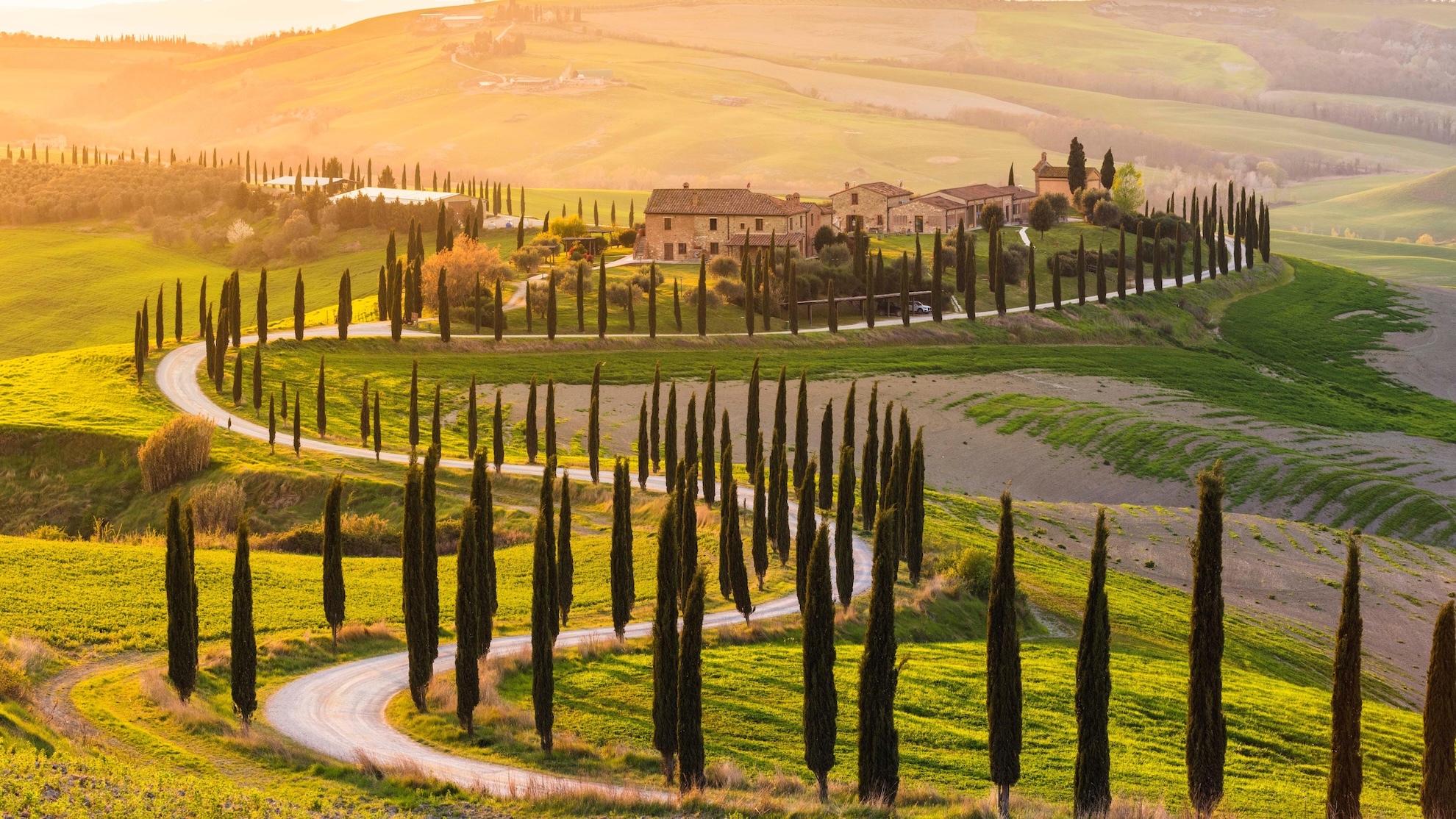

Tuscany, the flowered heart of Italy is known as the golden land, renowned for it’s art, history and evocative landscape, famous for its cypress rows, olive trees, vineyards, hills in the infinity and walled medieval villages…
Tuscany is a region where the past and the present merge together and coexist in perfect harmony. Towards the 8th Century B.C. traces of a mysterious and extraordinary population started to appear all over Italy: the Etruscans (people of the sea), Etruria got its name from them. Under the Romans the name was transformed into Tuscia, then changed again into Tuscania and finally into Toscana.
Tuscany is a very rich region from many points of view: artistic, cultural, food and wine. This is the homeland of Dante and Da Vinci, but also of Benigni and Fiorentina, it is the land of Chianti and it’s wine, cantucci, Renaissance art and the many characters who have made Italian culture unique, known throughout Worldwide.
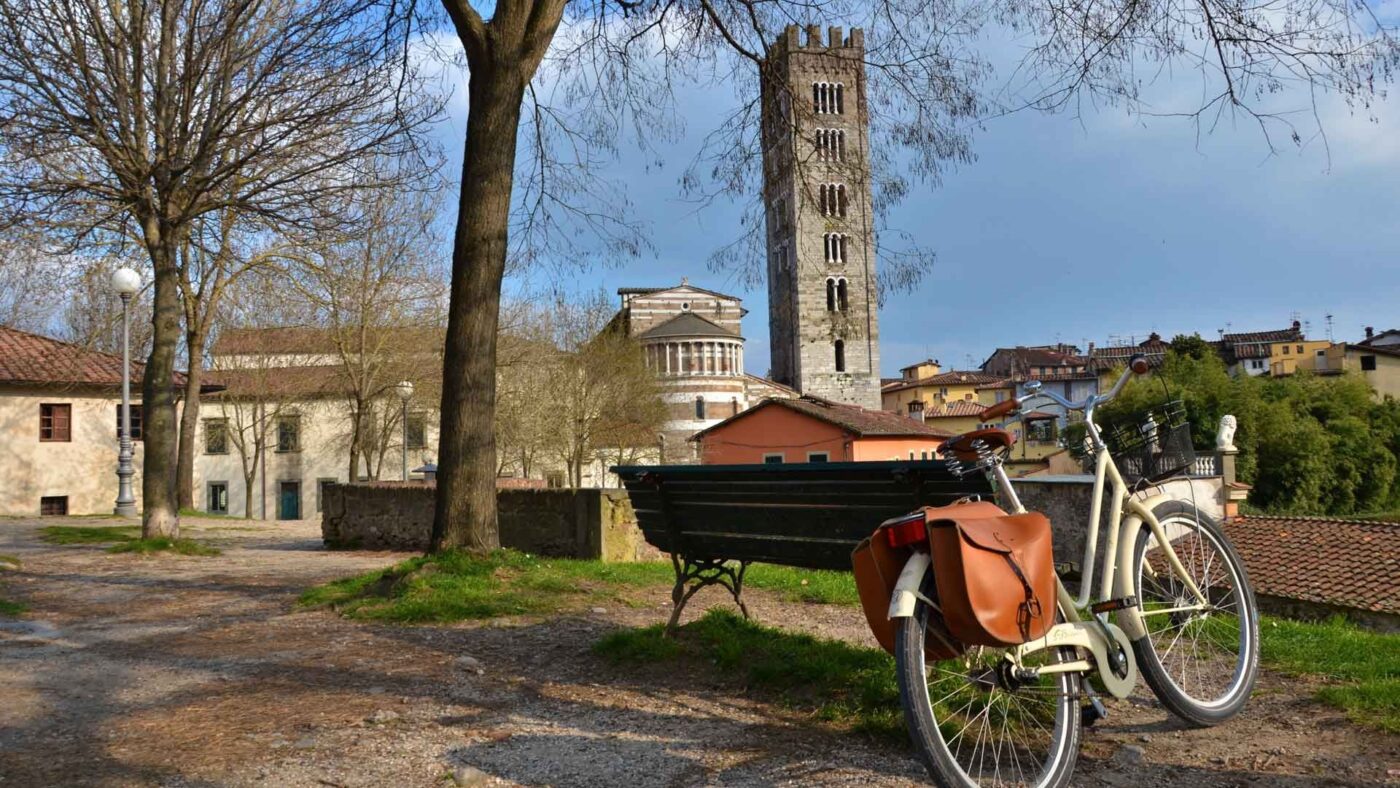
Lucca is a city and comune in Tuscany, Central Italy, on the Serchio River, in a fertile plain near the Ligurian Sea. It is the capital of the province of Lucca. The well-preserved city from the Renaissance period is famous for its walls.
Lucca’s array of wonderfully intact historical sites makes it a must-see stop on any Tuscan itinerary. The medieval city walls still stand—you can hike or bike on top of them. Also visit the Duomo di San Martino and the Roman amphitheater.
The city is located on a plain at the foot of the Apuan Alps and is less than half an hour from the coast of Versilia. Since it is not a hilltop village, it is ideal for anyone wishing to take a break from climbing.
Lucca is very easy to reach by car, as well as by train from both Pisa and Florence, making it perfect for anyone getting around solely on public transportation.
Most of the attractions in Lucca shows it’s ancient history;
The walls of Lucca is a great way to see the entire old city quickly and explore some of the smaller shops and restaurants inside.
Piazza Anfiteatro, the city square which is built on an ancient amphitheatrer situated in the heart of Lucca’s historical center.
The Basilica of San Frediano, the Clock Tower and Guinigi Tower are top attractions in Lucca.
Around Lucca
Near the town of Lucca, always in the province, do not miss the Versilia and its beaches, the Apuan Alps and the splendid Garfagnana with its small characteristic villages as Barga. There’s a lot to do and see also in the surroundings of Lucca!
To Italians, Forte dei Marmi is a mythical name, the “Queen of the Italian Riviera”, even if it means little to most foreigners. This upmarket summer resort on the Versilian coast is considered the epitome of chic. Forte dei Marmi is the Tuscan resort for socialising and being seen, only outdone by the bijou Punta Ala resorts further south, around Monte Argentario.
Forte dei Marmi is all about the summer resort and being seen in the right places. If you want more than beach-life and gentle cycling, then head north, towards Massa. If feeling in need of adventure, explore Carrara and the marble quarries in the Apuan Alps. This is elemental Tuscany, a stark contrast to cosseted Forte dei Marmi. If in need of cultural stimulation, head away from the coast to the closest art cities. Foremost among these are Pisa to the south, or Lucca, Pistoia or Florence to the east.
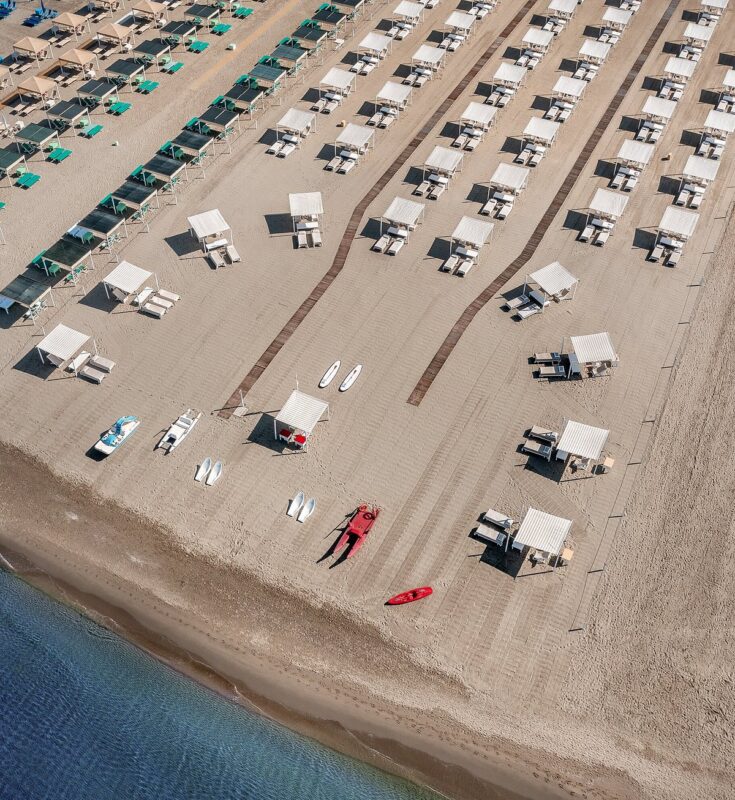
Fashionable Forte dei Marmi
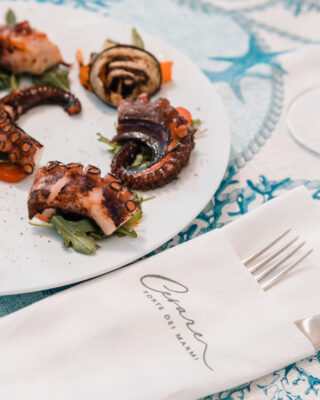 Forte dei Marmi is a place for playing with the rich. If you’re not, then just pretend. Treat it as an entertaining game. Guessing who’s pretending is part of the fun. You either get Forte de Marmi or you don’t. This is the resort of choice for holidaying industrialists from Turin and fashion magnates from Milan. This is a resort once favoured by the great Gianni Agnelli and now patronised by the likes of Giorgio Armani, Andrea Bocelli and billionaires from the Balkans. You will certainly find a number of pricey sports cars seen cruising the streets in the early evening! Not that you need a fortune to enjoy the resort, it’s enough to indulge in window-shopping rather than real shopping and to choose your pleasures with care. The shops and cafés around Piazza Marconi somehow still manage to retain something of a small-town atmosphere, even if they do sell some of the most expensive items money can buy.
Forte dei Marmi is a place for playing with the rich. If you’re not, then just pretend. Treat it as an entertaining game. Guessing who’s pretending is part of the fun. You either get Forte de Marmi or you don’t. This is the resort of choice for holidaying industrialists from Turin and fashion magnates from Milan. This is a resort once favoured by the great Gianni Agnelli and now patronised by the likes of Giorgio Armani, Andrea Bocelli and billionaires from the Balkans. You will certainly find a number of pricey sports cars seen cruising the streets in the early evening! Not that you need a fortune to enjoy the resort, it’s enough to indulge in window-shopping rather than real shopping and to choose your pleasures with care. The shops and cafés around Piazza Marconi somehow still manage to retain something of a small-town atmosphere, even if they do sell some of the most expensive items money can buy.
Cycle along the seafront promenade or walk along the pier, originally created to ship Michelangelo’s marble from the surrounding mountains. Wander the backstreets to sense the peace and quiet that artists and writers found here in the late 19th century. While window-shopping in the early evening, watch the millionaires picking out pieces of designer jewellery. Save your real shopping for the Saturday market on Piazza Marconi. Indulge in some beach-lounging where swimming is optional, but making yourself presentable is essential, especially at a beach club. As the sun sets, make sure that you’re sitting at an outdoor café, in time to preen and pose over cocktails and nibbles. After dinner, stroll along the seafront or find the closest gelateria for an ice cream. After you’ve got the measure of Forte dei Marmi, simply head off on one of the excursions we suggest below – and check our precise shopping and dining tips in this guide.
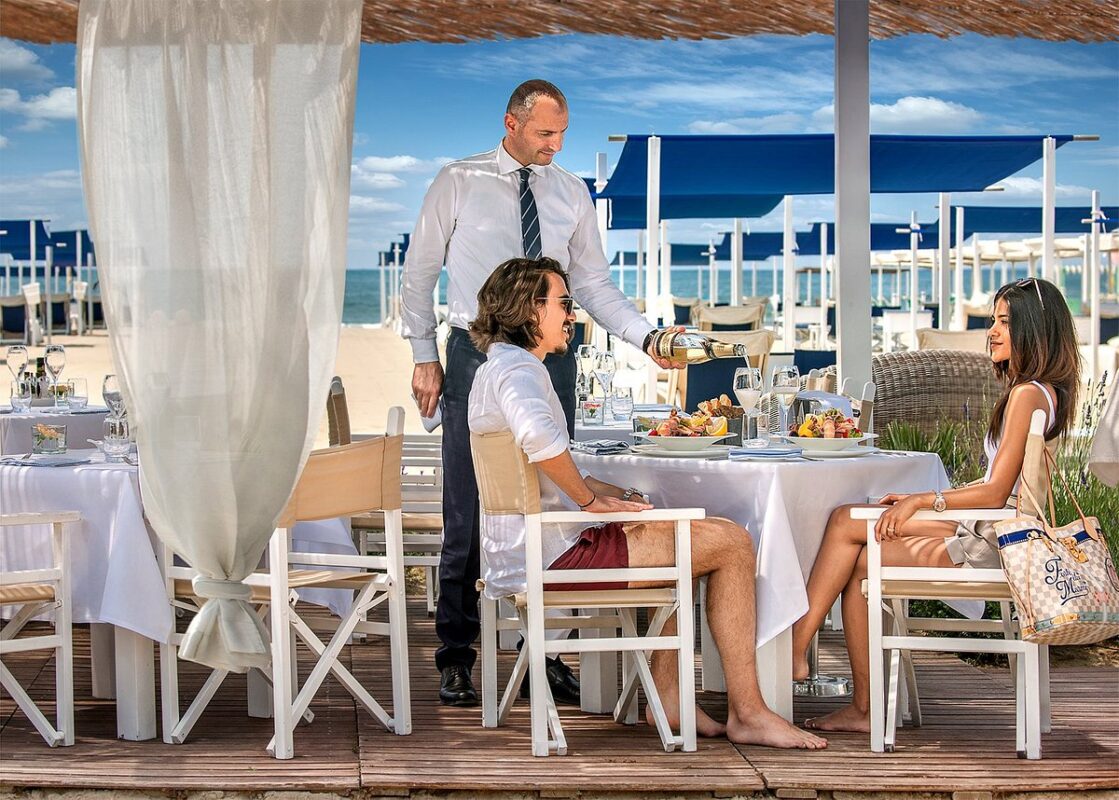
Beach-life in Forte dei Marmi
Tuscan beaches deliver both romance on the rocks and the regimented lines of beach umbrellas that most Italians confuse with beach-break heaven. In Forte dei Marmi, Versilia boasts the best-known beach resort for the chic set while Viareggio remains the most popular big beach resort in Tuscany. The region is judged to have a superbly clean coastline, second only to Liguria’s, and scores highly for cleanliness of the water, safety, quietness, eco-friendliness and sustainability. Known as `the blue flags’ system, it is considered trustworthy and confirms the wisdom of opting for a beach holiday in Tuscany. In Versilia, the current resorts awarded the best `blue flags’ are fashionable Forte dei Marmi and bustling Viareggio. Neighbouring resorts of Marina di Pisa, Massa and Carrara have all confirmed their blue flag beach status.
Beach-lounging is big business in Forte dei Marmi. Framed by the Apuan Alps, the resort is made for swimming and strolling and there’s even a stretch of dunes. Patches of beach are freely accessible, while the remainder is made up of smart bathing huts and tropical-style bars, perched on the fine pale-grey sand. The gently sloping shore means bathing is safe. Italian-resort-style, the sea is mostly reached by paying an entrance fee. Expect to lie on a sunbed among rows of others, on sand carefully raked and flattened for your added comfort. There are benefits to this classic Italian approach to beach holidays. Even if you pay for access, in return you get facilities such as sun-loungers, showers, beach cabins and probably a bar or a restaurant. Beach games may well come with the territory and are even more entertaining to watch than to play. And, as described, the water is still very clean, despite the crowds.
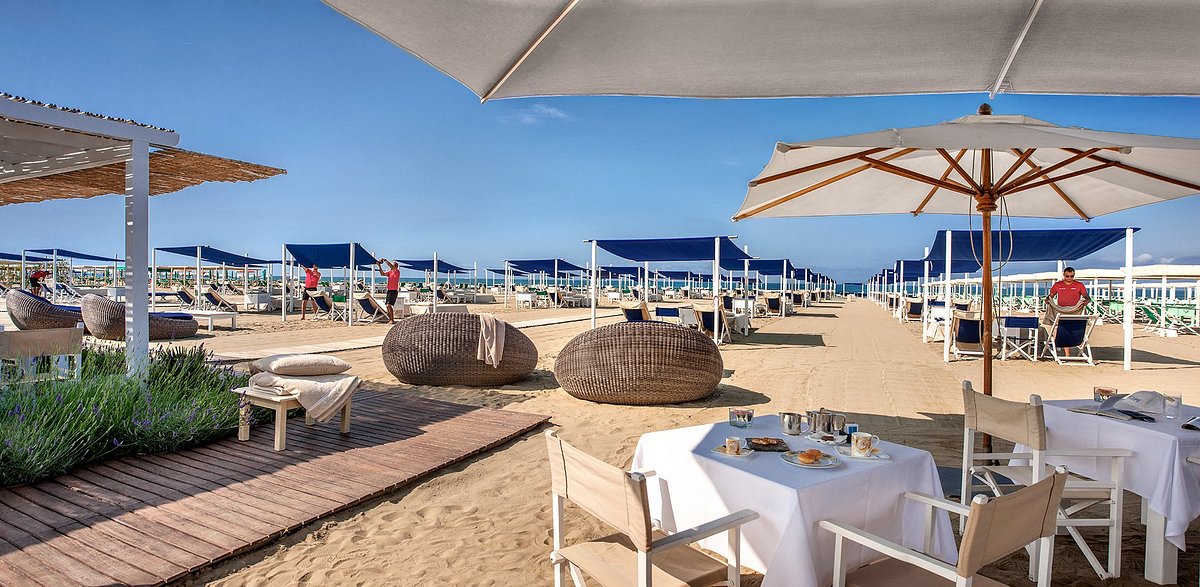
Cycling around Lucca – or strolling along the city ramparts
Lucca lies 38 km east of Forte dei Marmi and makes a delightful change after you’ve tired of posing and preening at Versilia’s most prestigious beach resort. Lucca is a classic Tuscan city on a human scale, with just enough cultural attractions to beguile but not bewilder. In summer, outdoor concerts add to Lucca’s appeal, as do the discreet wine bars and cosy inns. To jaded urbanities, Lucca represents life as it should be led. Ringed by Renaissance walls, the city is made for leisure. The massive ramparts are now the place for jogging, flirting, gossiping and cycling – or several activities at once. It’s hard to believe that Lucca’s 500-year-old walls were built to keep enemies at bay. In 1817, the encircling ramparts were planted with a double row of plane trees, which shade the broad avenue ¬running along the top of the walls. This is now a popular playground, promenade, jogging trail and cycle route.
This drive explores Massa, Carrara and the elemental Apuan Alps, putting the marble mountains in their true context. North of chic Forte dei Marmi the landscape is very different. You could leave the coast at Marina di Massa, a popular resort, with fine wide sandy beaches, pine groves and a promenade of pastel-shaded villas. Tuscany’s northern corner is one of its wildest, strangest and least explored areas from the Versilia coast to a dramatic landscape of pine-covered mountains, craggy ravines, remote castellated villages and marble peaks. The coastal lowlands swiftly give way to snow-capped mountains, terraced hillsides, deep gorges and mountain streams, populated by deer, wild boar, mouflons, badgers, stone martens and wolves, not to mention the flocks of walkers, rock climbers, cavers and canoeists. It’s hard to get more than a glimpse of this wilderness on a day trip but it’s still worthwhile as it’s such a contrast to the coast.
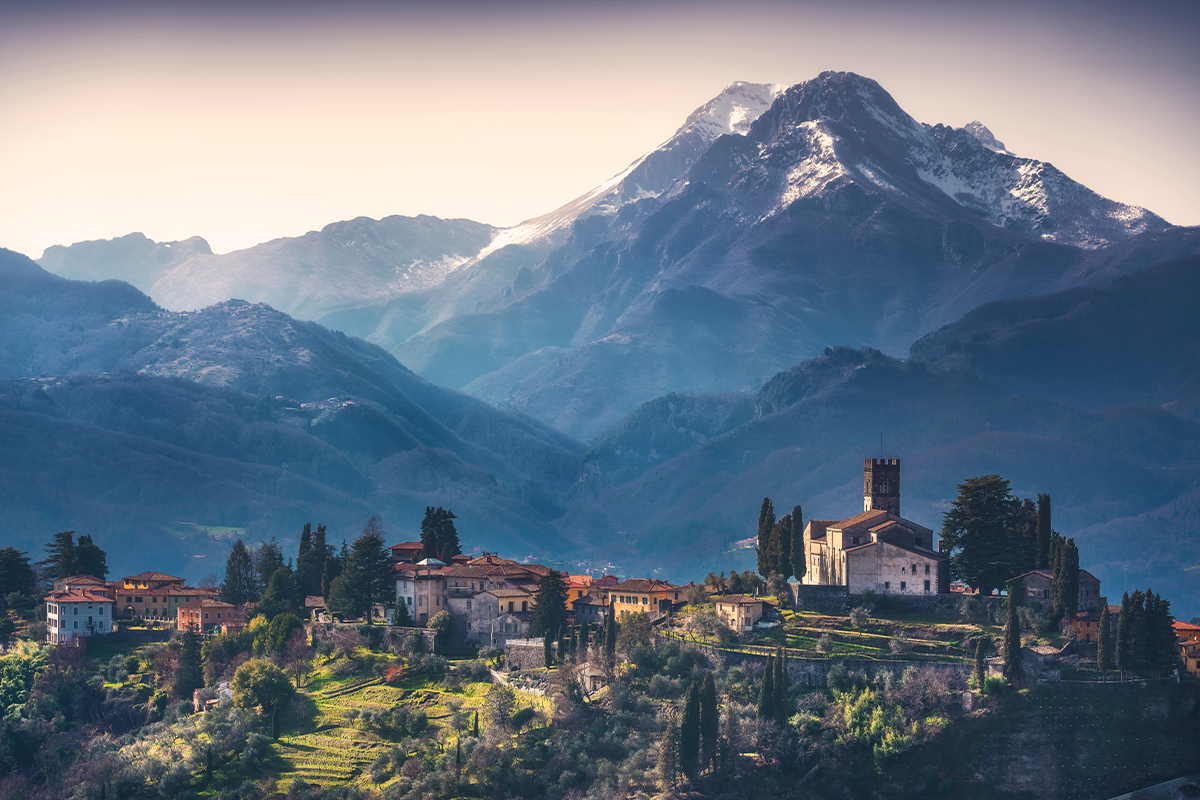
Pisa, 38 km south of Forte dei Marmi, makes for a perfect day trip and is reached in under 40 minutes by motorway. No city is as closely associated with one single monument as Pisa is with her Leaning Tower. Pisa is famous for its leaning tower but also is the birthplace of the Italian Renaissance.
It is a wondrous site but so are the Cathedral and Baptistery. Beyond this tourist-studded area, you will have much of Pisa to yourself. Unlike most Tuscan cities, Pisa’s religious centre is not sealed inside the walls nor plonked in the old town but marooned on the northern edge of town. The star sights are clustered around the Campo dei Miracoli, a veritable Square of Miracles.
Take in these celebrations of Pisan Romanesque and then explore the city itself. Or be radical: to avoid the photo-posing pandemonium, visit the town first and the Tower afterwards. Don’t restrict your visit to a selfie in front of the Leaning Tower. Spare a thought for the rest of Pisa, which is full of intriguing corners.
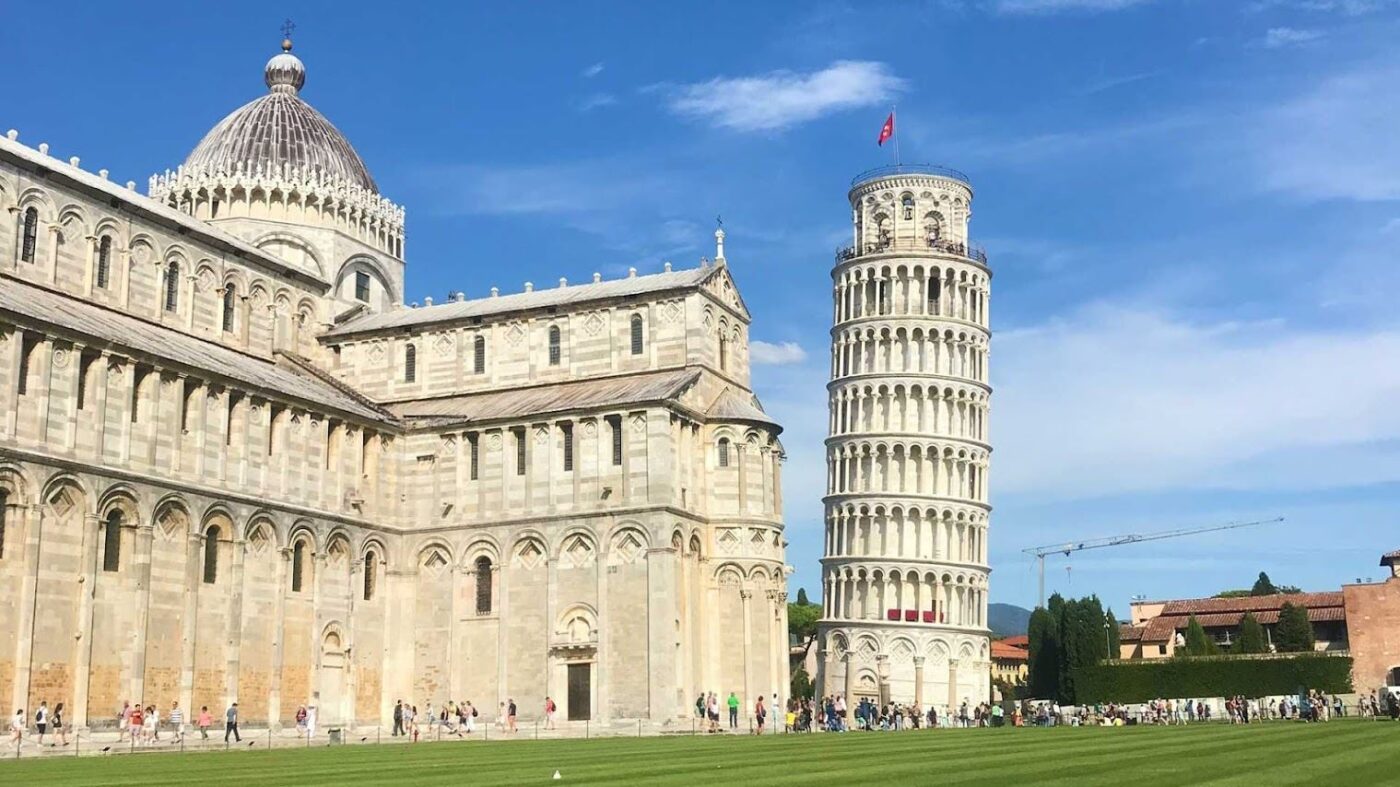
Chianti, the area of rolling hills stretching between Florence and Siena, Arezzo and the hills of Pisa, has long been considered the “heart of Tuscany”. It’s splendid landscape is dotted with dense vineyards, chestnut forests, oaks and maples, attractive medieval villages, romantic castles and charming colonial farmhouses. It is also the birthplace of one of the world’s most famous red wines: Chianti.
Chianti is the ideal getaway for those wanting to experience medieval villages and romantic vineyards tucked away amongst rolling hills. From village to village, one discovers country castles and farms featuring numerous wineries and enoteca (wine shops and bars) for enjoying the fine local wine. The legendary origins of the Clante (named for a stream known since the Etruscan era) along with its winemaking tradition have made it famous worldwide.
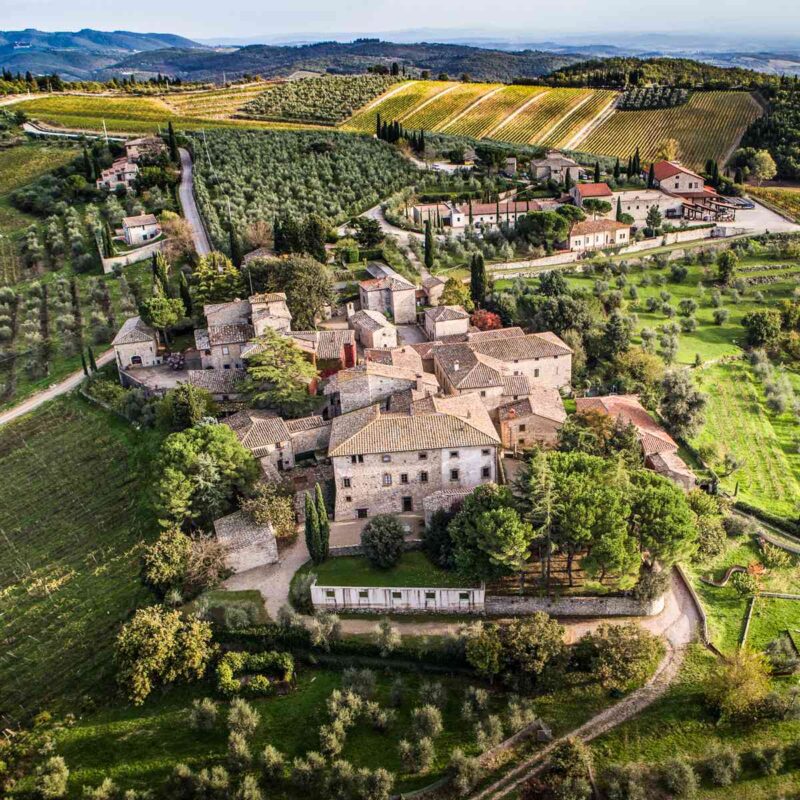
This region has a lot to offer at any time of the year, but spring and autumn are the ideal seasons to fully enjoy the beauty of the landscape. In these seasons, the climate is mild, the atmosphere is calm and the prices are advantageous.
The summer months are warm and busy, July and August are less for sightseeing, perfect for hanging out at your country estate by the pool. Winters are generally rather cold throughout the region and snowfalls. Minimum temperatures below zero are possible. A good idea to visit Tuscany can be during the most typical traditional events, such as the Palio di Siena (July 2nd and August 16th) or the Calcio Storico Fiorentino (June 24th).
Tuscany is easy to travel to. There are flights to the international airports of Pisa and Florence. By train, the main cities are connected on the national railway line which connects the north (Milan via Bologna) to the south (towards Rome and Naples). The most important station is Firenze.
Visit Florence, the city of the Renaissance
Florence is a city that never loses its magic. From a visit to the majestic Duomo, to a night out in San Frediano, one of the coolest neighbourhoods, Florence has it all. And as the birthplace of the Renaissance, Florence feels like an open air museum. Don’t miss Piazza Signoria, a walk along the Ponte Vecchio and an evening Negroni in Santo Spirito.
Enjoy it’s glorious countryside
Rolling vineyards, quiet olive groves, avenues lined with cypress trees and walled towns on the top of a hill. This is Tuscany. Landscapes so unforgettable they look like they have jumped right off a postcard. Drive the winding roads of the Chianti region and the Val D’Orcia, a Unesco world heritage site. Stay in a local agriturismo or country B&B – and while you’re there why not try your hand at grape picking during the vendemmia. Walking tours, cycling holidays and even Vespa tours are a great way to see this beautiful world go by.
Discover the best of the Chianti region which boasts one of the finest countrysides in the world!
Wine tasting, from Chianti to the Super Tuscans
Wine is one of the things Italy is famous for, Tuscany has some of the finest wines in the country. From the excellent Brunello di Montalcino to classic Chianti wines, there’s something to suit your taste. Try wine tasting at a historical wine estates like Antinori or Badia a Coltibuono in the Chianti region. In Tuscany every area has something different to offer your tastebuds. Try the white wines in the Maremma, the noble wines of Montepulciano, and the Super Tuscans of Bolgheri. Alla salute! Enjoy some of Italy’s most scenic drives
Driving in Tuscany is part of the reason for going. It’s the best way to see this incredible landscape at any time of year. Every season has its own special colours. And subtle changes in topography. In Tuscany, every trip offers a new viewing opportunity. Head for Val D’Orcia and take a drive between Pienza and Montepulciano. Or drive along the winding roads of the Chianti, immersed in vineyards and olive groves. Mount Argentario in the Maremma is the best spot for coastal drives.
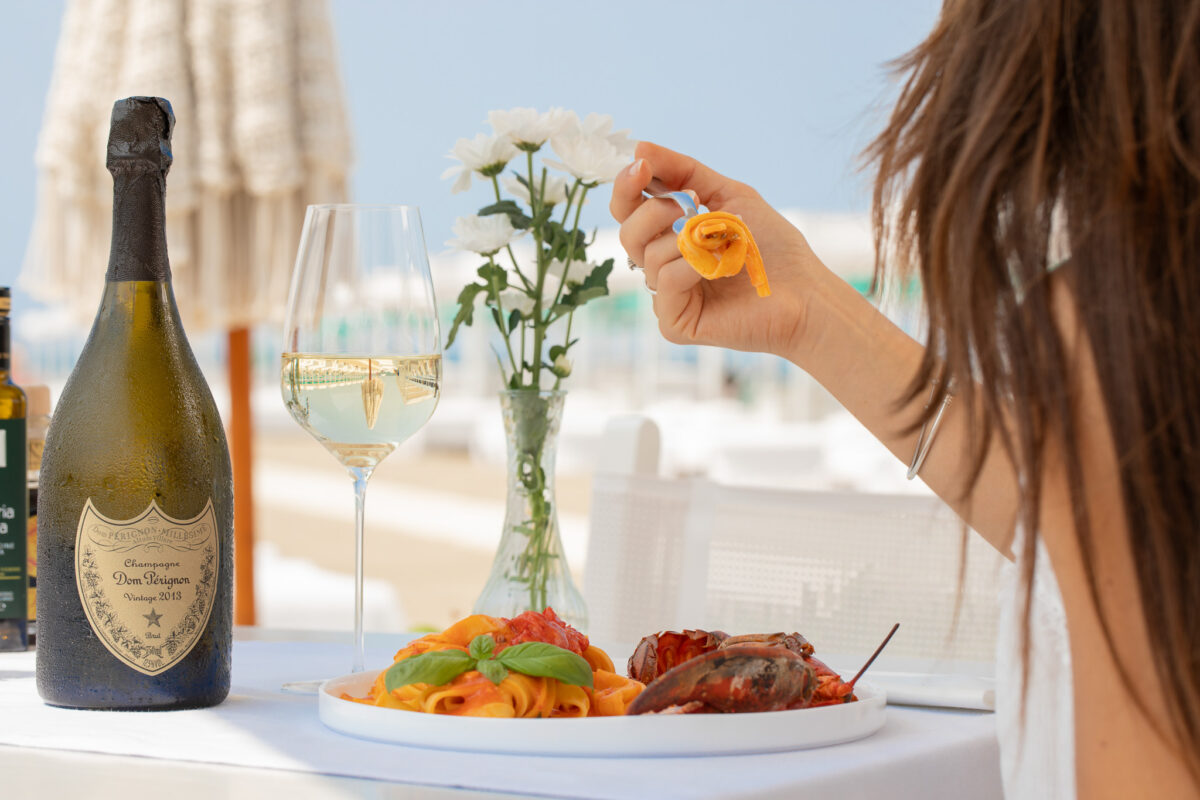
Visit a Medieval town
Tuscany has its fair share of Medieval towns. Beautifully maintained and restored they seem so untroubled by the passing of time that you could be walking around in the middle ages. The most famous is San Gimignano with its impressive house towers that create its famous silhouette. Among the most scenic ones are Cortona, Certaldo Alto and enchanting Volterra, the splendid Massa Marittima and of course Siena with its gorgeous Piazza del Campo.
Climb an ancient tower
From Giotto’s bell tower in Florence to the Torre Grossa in San Gimignano and Boccaccio’s house in Certaldo Alto, there are plenty of atmospheric towers to climb in Tuscany. Aside from the thrill of being inside a centuries old tower, one of the best reasons to do this is the view. These towers usually dominate the town so you’ll get breathtaking views and of course an amazing spot for a selfie!
See world-famous works of art
Florence is the home of the Uffizi Gallery, one of the world’s most celebrated art museums. You’ll find work by masters from Michelangelo to Da Vinci, Raphael and Botticelli. Visit the Accademia to admire the Statue of David and the Bargello for more masterpieces of sculpture. Check out the Pinacoteca in Siena of the National San Matteo Museum in Pisa for some amazing Medieval art.
Admire architectural wonders in Tuscany
The Square of Miracles and the Leaning Tower are some of the highlights of Italy, and Florence’s Cathedral with its Dome is one of the architectural wonders of the world. Siena’s Cathedral and Piazza del Campo are pure Medieval pleasure for the eye, while Lucca’s massive city walls are an impressive example of Renaissance military architecture. In Tuscany you’ll also find some gorgeous country churches like Sant’Antimo Abbey and the Monte Oliveto Maggiore monastery with its fascinating frescoes.
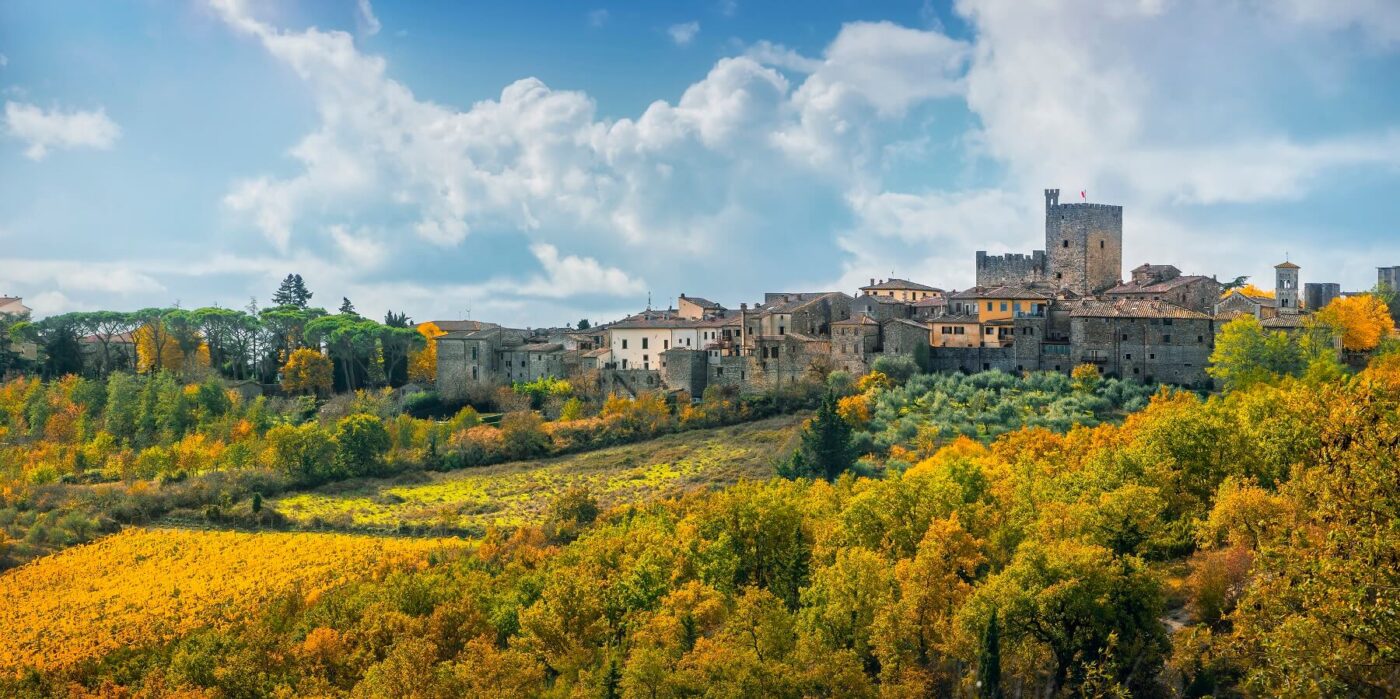
Relax at the beach
For anyone wanting a beach holiday in Italy, Tuscany is a gem. The coast in Tuscany has clean, swimmable beaches and you can still find some that are quite wild, especially in the Maremma area. If you’re wondering what to do in Tuscany in the summer a trip to the beach is almost mandatory. You can rent a deckchair and umbrella, or simply head for the “free beaches’.
Taste the flavours of Tuscany
You can hardly go to Tuscany without trying some of their classic dishes. From pasta to soups and simple cured meat, there are delights on every menu. Try the famous Bistecca alla Fiorentina – the Florentine T bone steak, the mouthwatering crostini with lardo , fish soup cacciucco, and an artisan gelato is never a bad idea.
Order a cappuccino – in Italian
For your morning coffee in Tuscany you’ll be going to a local “bar” (the word for coffee shop in Italian). And the choice is endless. A simple caffè, a frothy cappuccino, or a milky caffellatte. All are delicious, but you’ll savour them even more if you order like an Italian. Say “Vorrei un cappuccino per favore” which literally means you’d like a cappuccino please. Don’t forget to say “Grazie” when you get your change!
As for sports and nature lovers
From water sports to hiking, biking or horse riding, Tuscany is the perfect balance between relaxation, discovery and sports. With over 10 stunning golf courses, Tuscany is full of golf clubs and practice fields ideal for all fans of this wonderful sport.